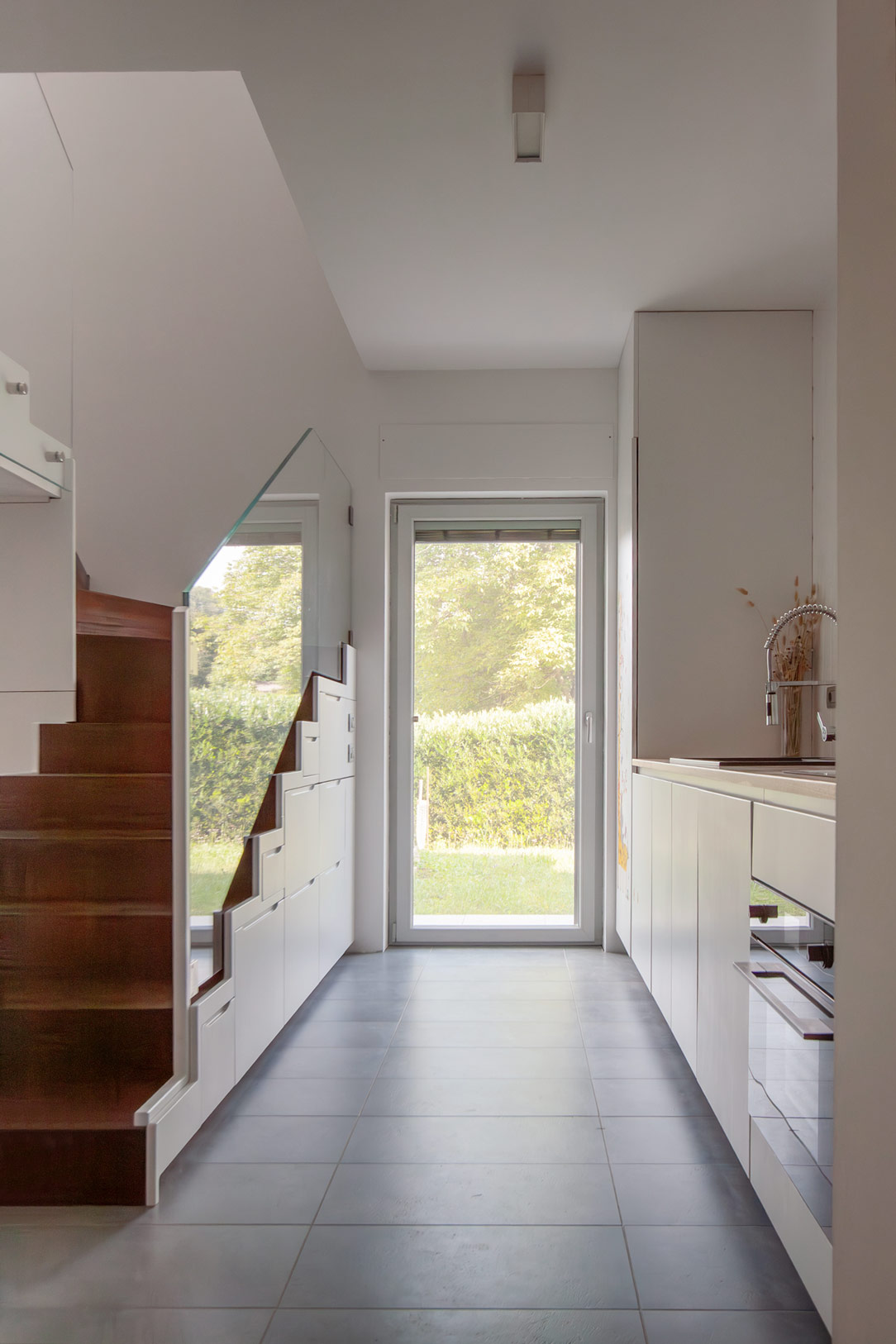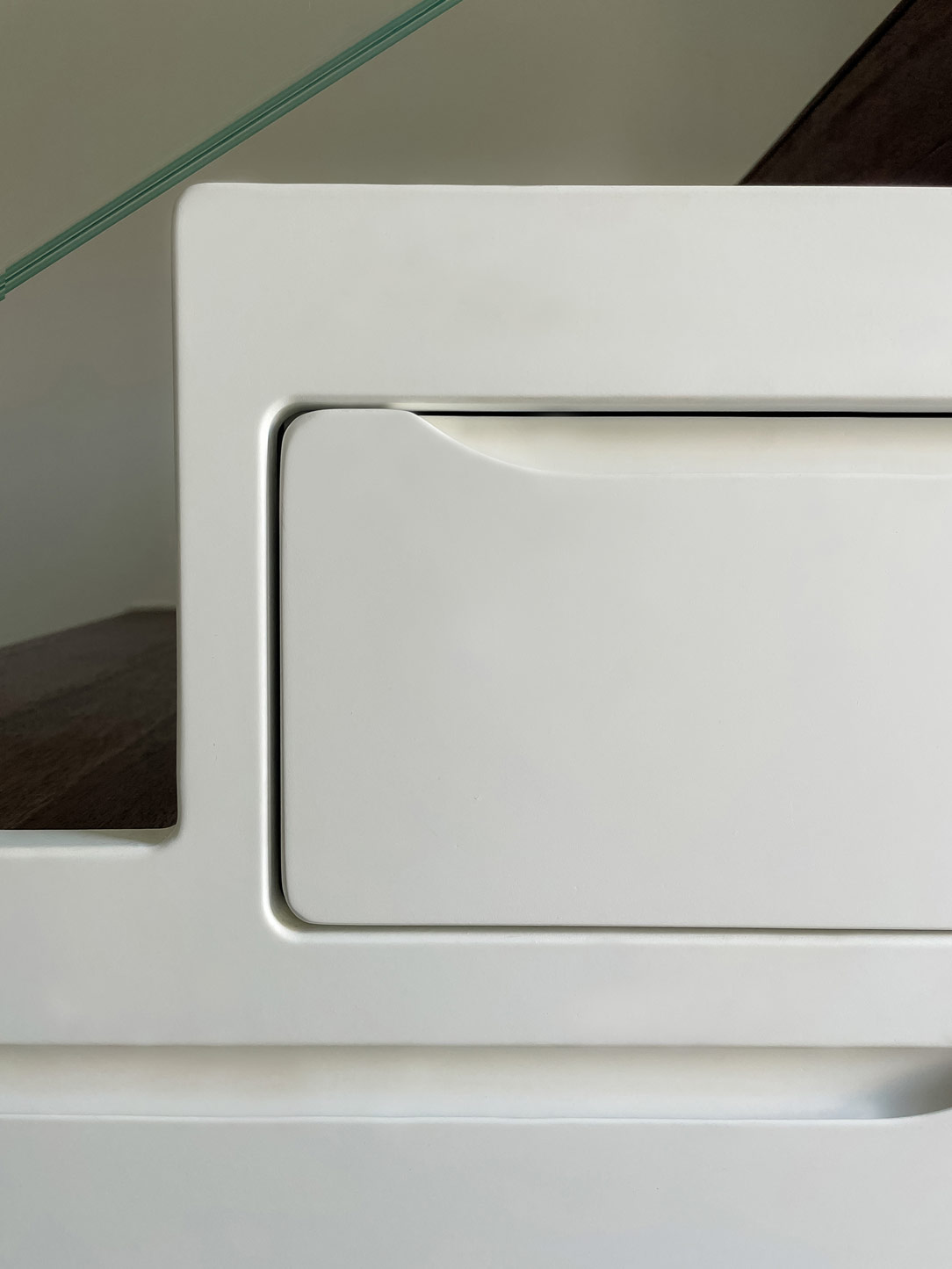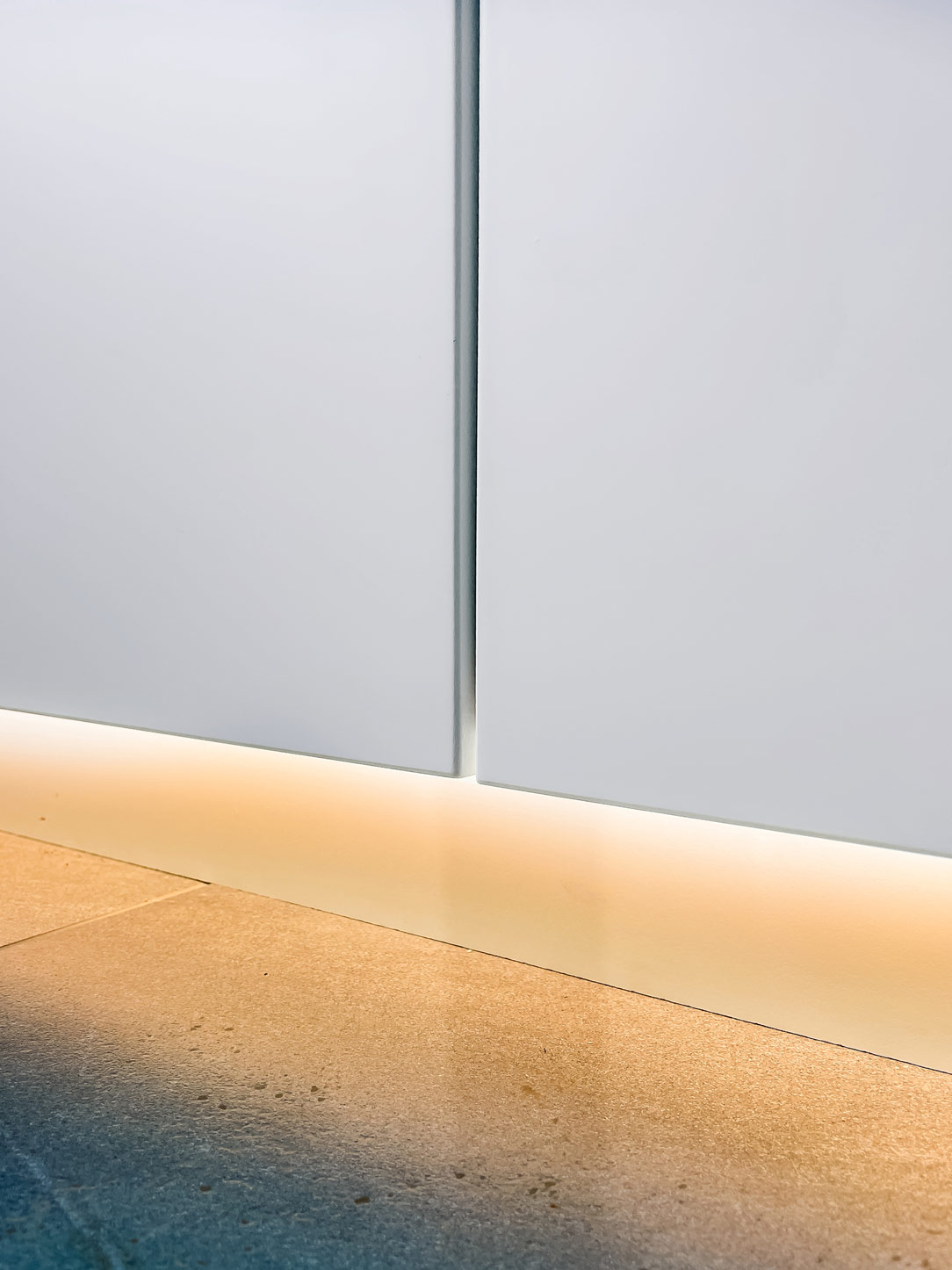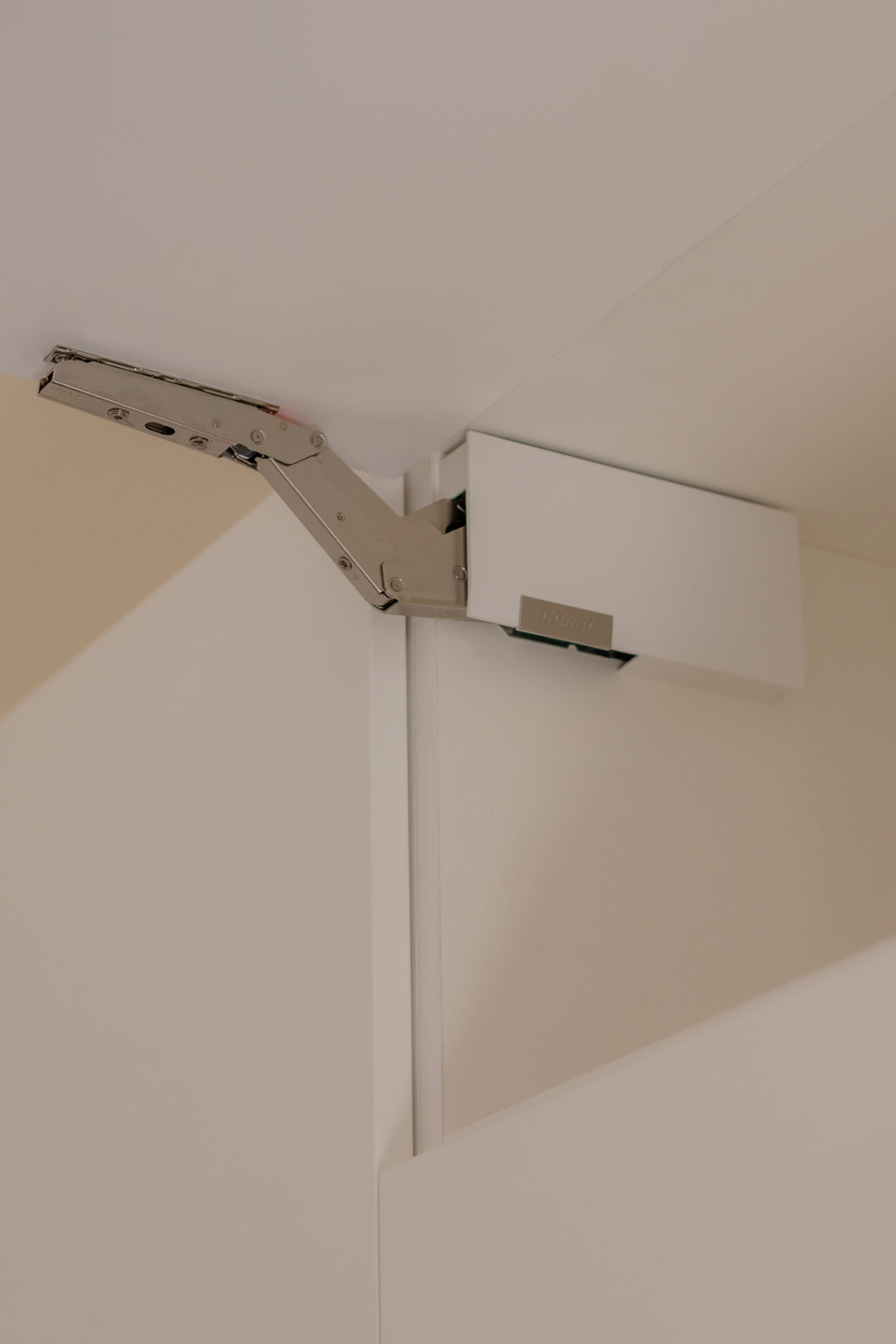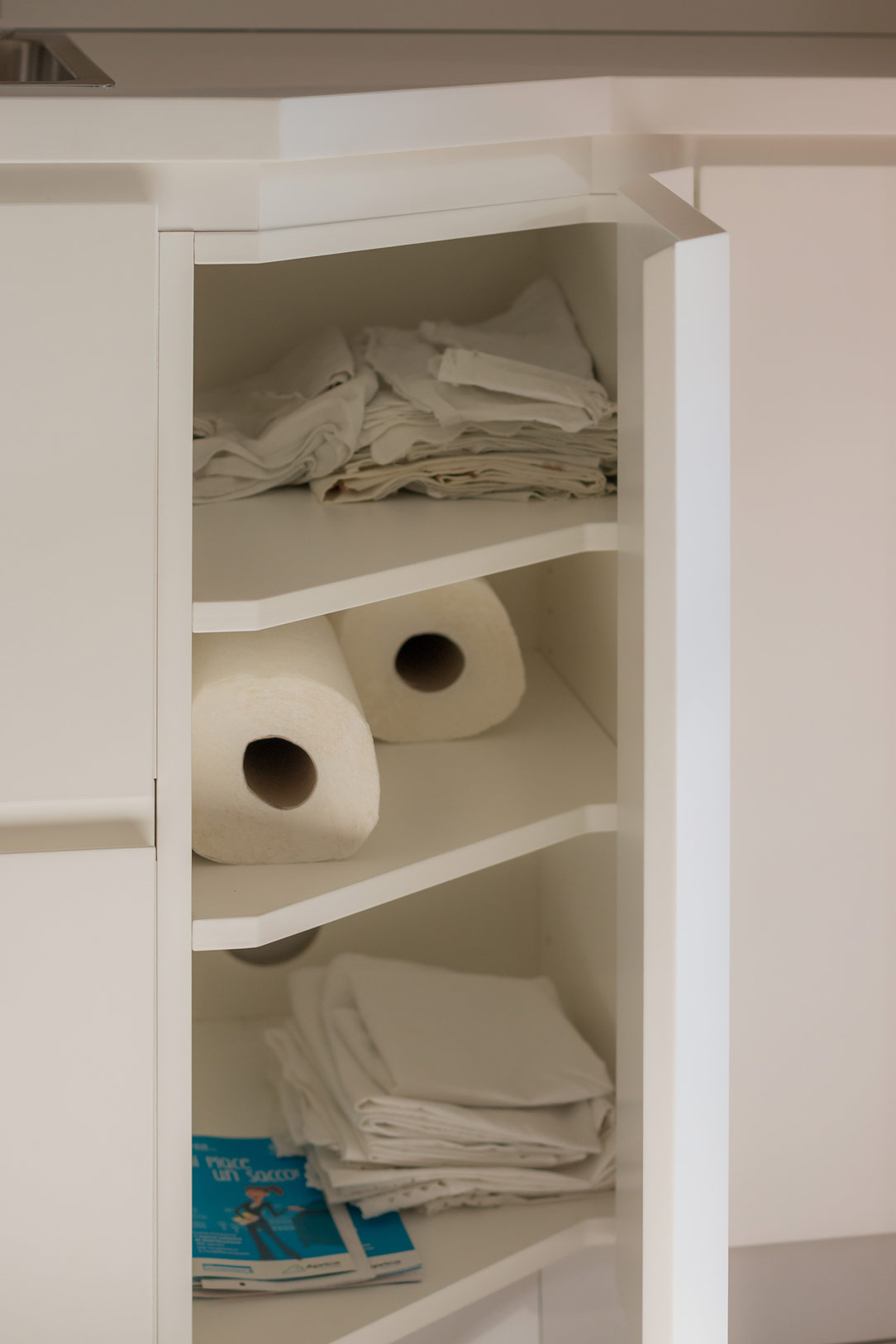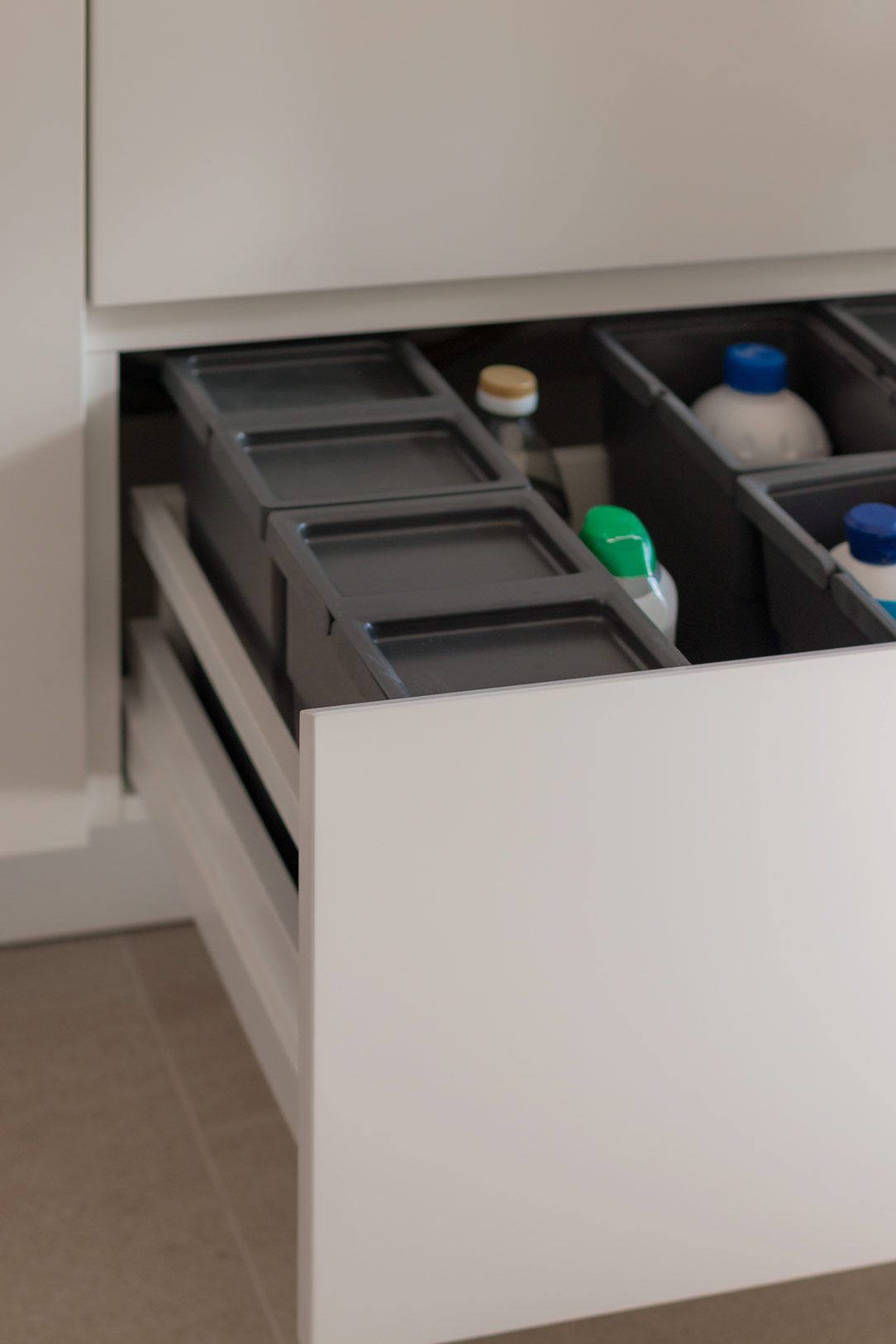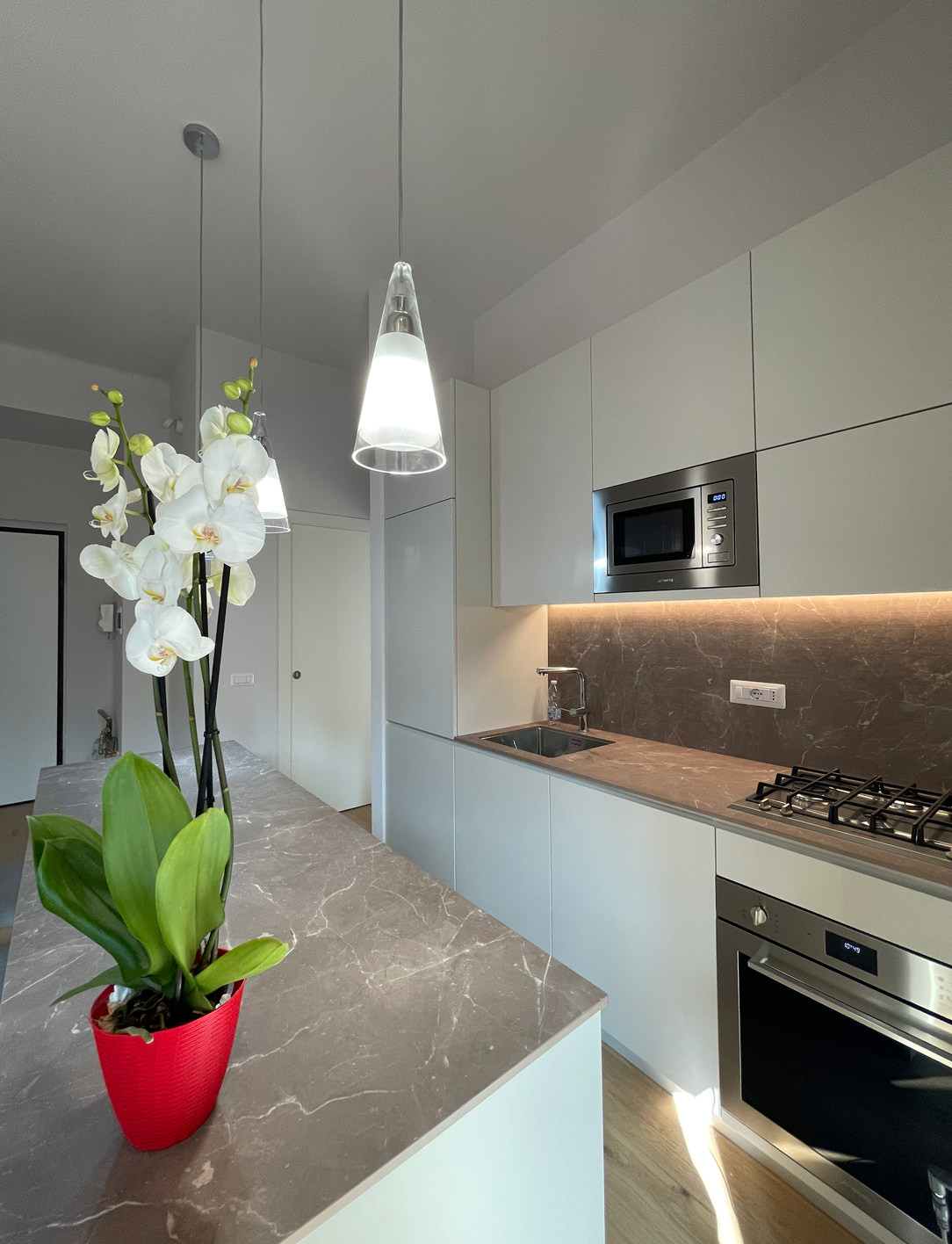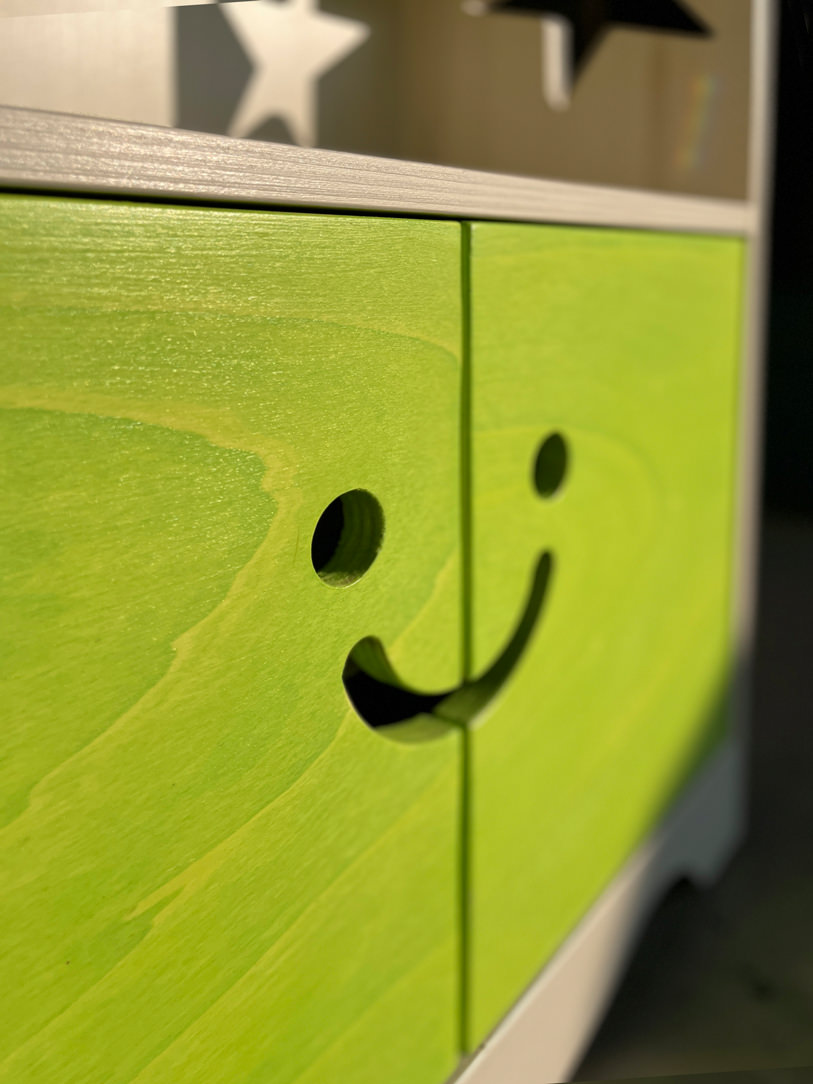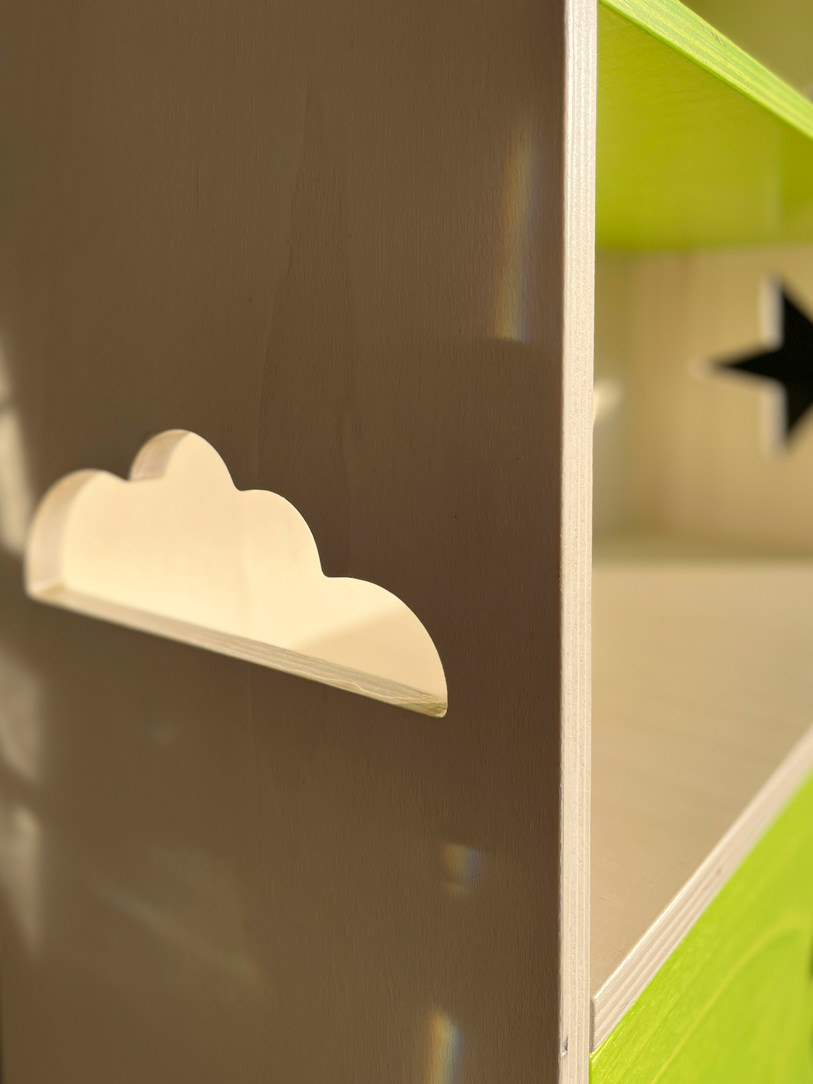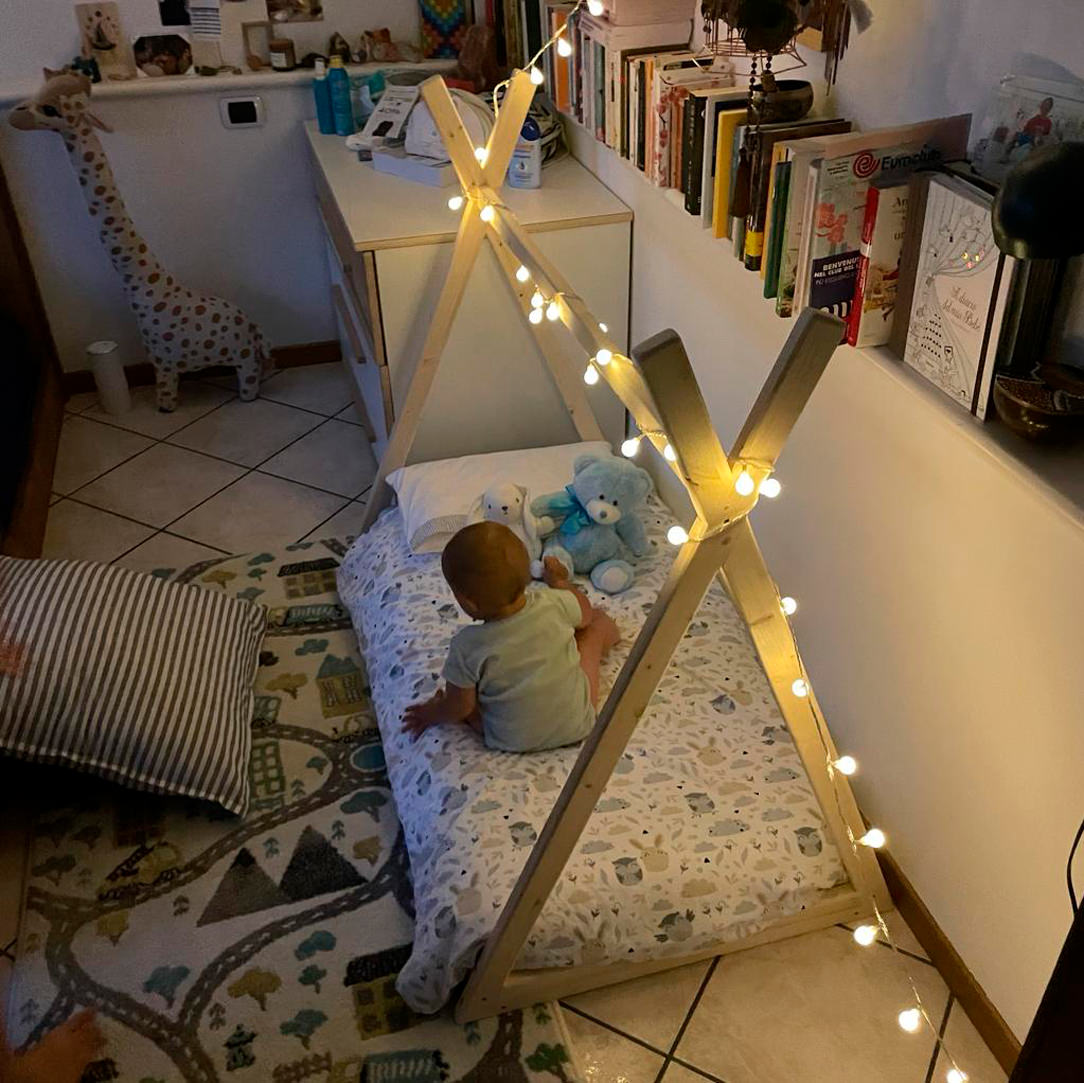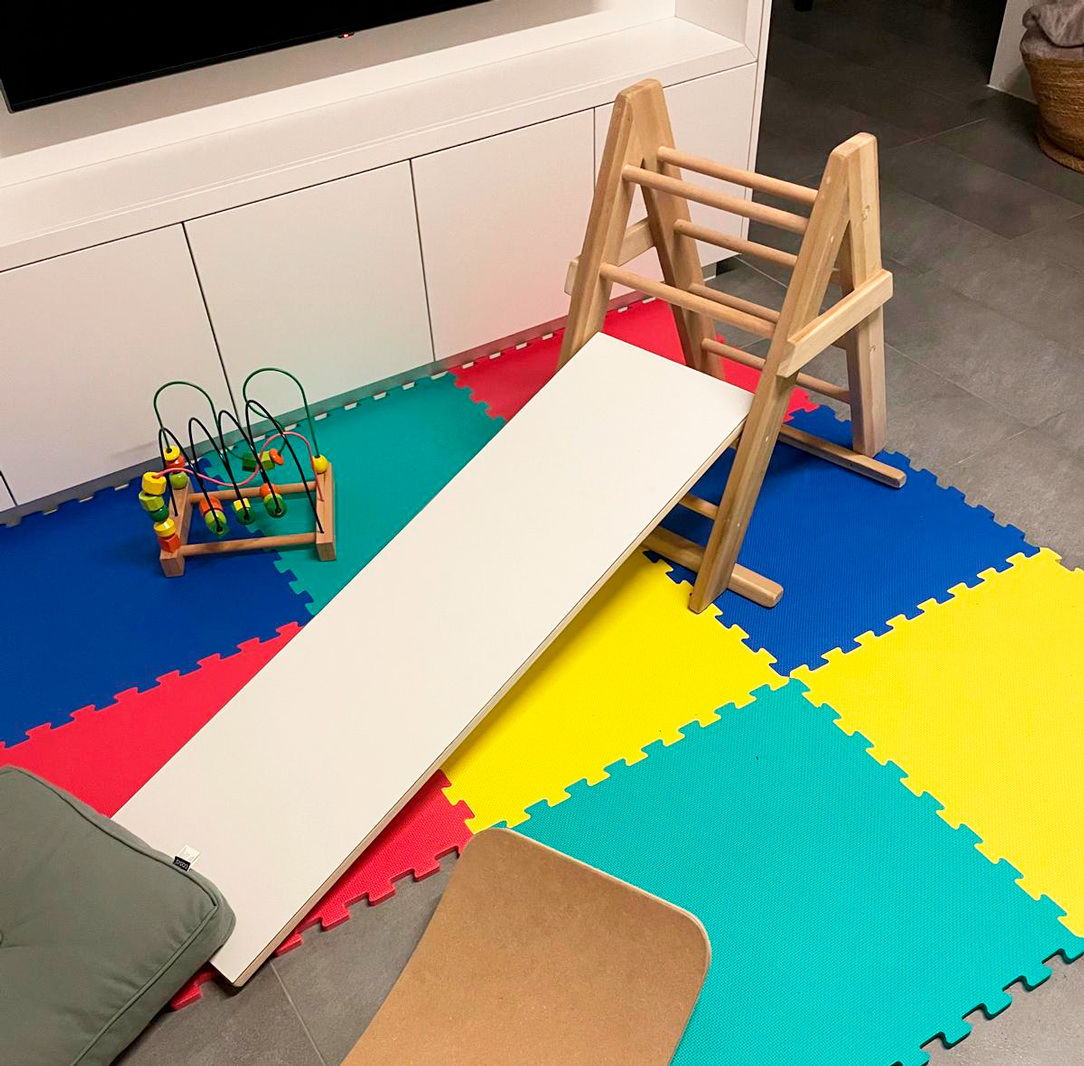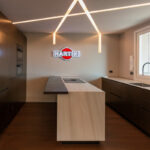
Space Transformation: Corner Kitchen with Extendable Round Table
In this cottage nestled at the foot of Colle Ranichese, we have redesigned a corner kitchen. We made it compact and bright, paired with an extendable round central table, to redefine the spaces and internal flows of the living area.

KITCHEN: Maximizing Capacity and Organization
To ensure the maximum available storage space, elements develop vertically, reaching just below the shaped and illuminated plasterboard. Particularly, the wall cabinets provide extra space without compromising the clean aesthetics of the kitchen. Inside, shelves and pull-out drawers offer smart solutions for optimal organization. Ovens have been strategically placed in a column that closes the kitchen corner towards the living area, harmoniously reflecting an imposing opposite column. This hosts a large freestanding refrigerator, complete with an internal ice maker and dual temperature for a potential wine cellar in the lower part of the freezer.
In this article, another compact and functional corner kitchen in shades of gray is highlighted.




MATERIALS: Resilience and Refinement in Every Detail
Material selection has been crucial to ensure both durability and style. The silk-effect One World laminate used for the external doors is very matte, deviating from the classic slightly reflective laminates, resembling almost a lacquered wood but with the robust properties that characterize it. Drawer guides, white to maintain chromatic cohesion, come with internal dividers for order. The Dekton countertop, a high-quality ceramic material, withstands thermal shocks and features a beautiful marbled color that harmonizes seamlessly with brown tones. The coffee-toned fragranite sink complements the countertop, completing the color harmony in the environment.
Resilience is also evident in this olive green laminate kitchen.


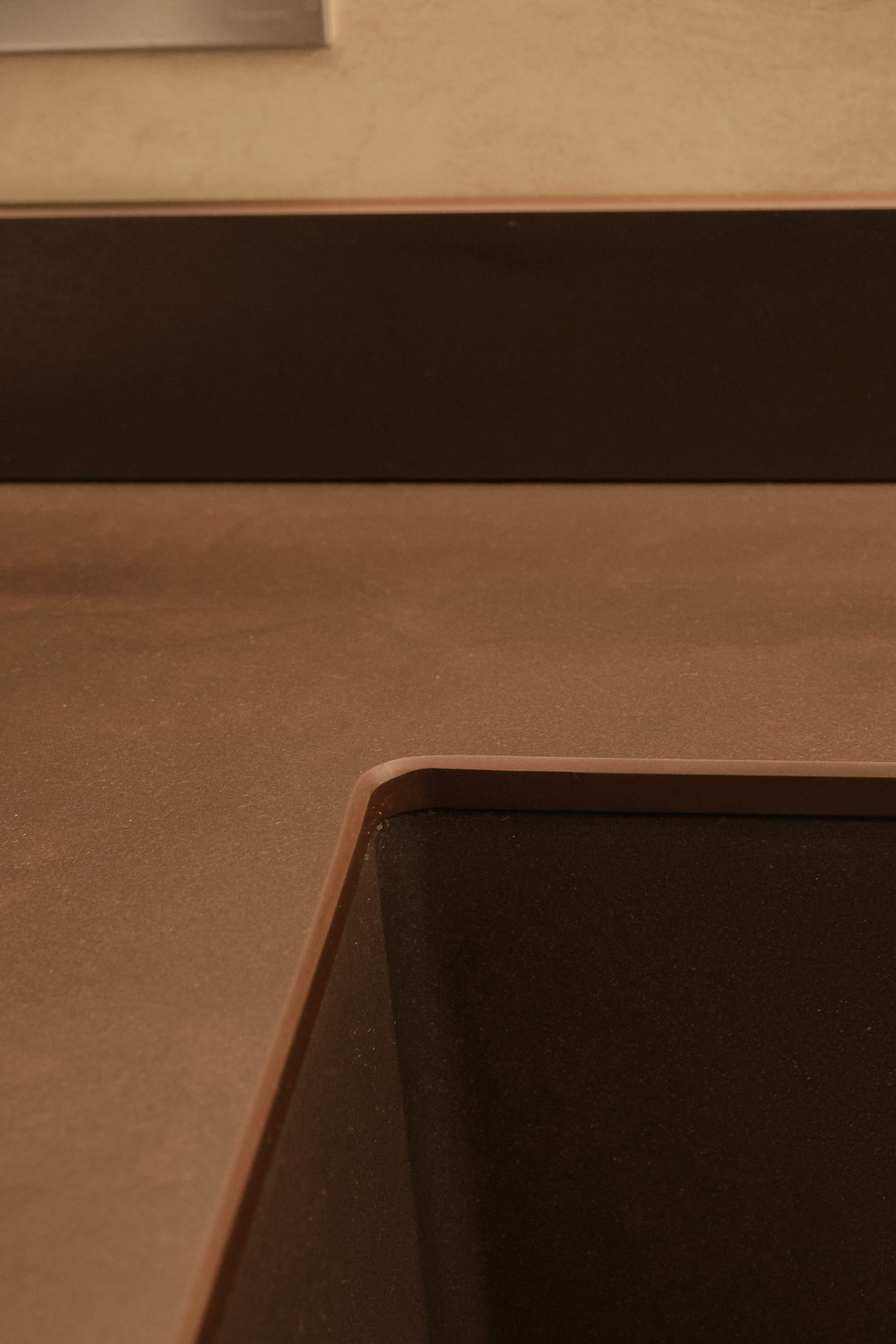

EXTENDABLE ROUND TABLE: Flexibility and Style
At the center of the kitchen space, we placed a Full Moon extendable round table from the Easy Line – Ozzio collection, chosen to meet the demand for accommodating more diners without compromising the surrounding space. The soft lines of the table echo the waves of the shaped ceiling, seamlessly integrating with the space. The double opening allows transforming the table from oval to circle, doubling its dimensions to accommodate twice the number of diners. The anthracite brown of the tabletop coordinates with other dark elements in the living area, while the wood texture recalls the wooden elements of windows and doors.

CONCLUSIONS
In conclusion, this project has not only enhanced the functionality of the corner kitchen but has also created an aesthetically captivating space. The kitchen and the extendable round table embody the perfect fusion of practicality and design, transforming the living area into a welcoming and distinctive locale.



